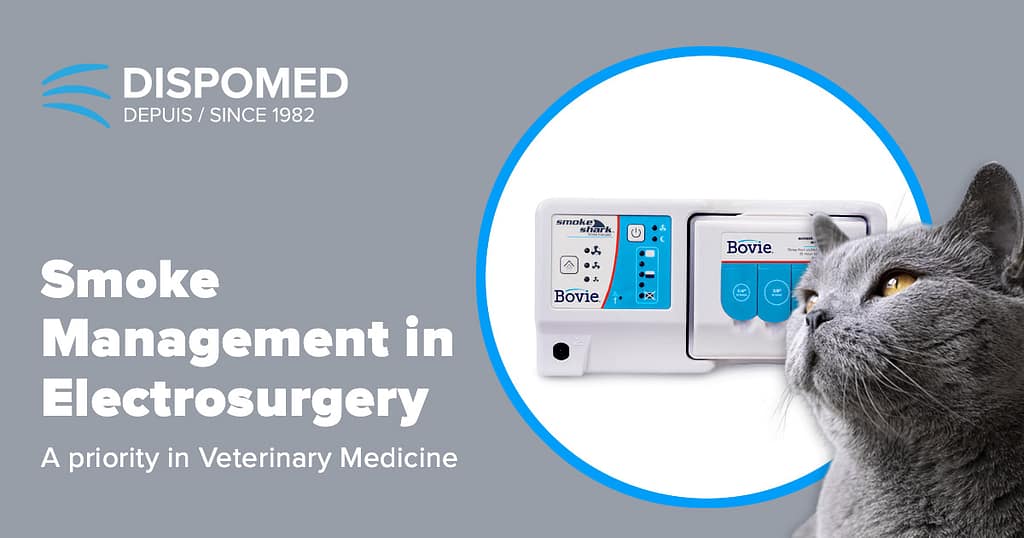Electrosurgical procedures, commonly referred to as electrosurgery, are widely used in veterinary clinics for precise and efficient tissue cutting, coagulation, and desiccation. While this technology is highly beneficial for both patients and practitioners, it produces an often-overlooked by product: surgical smoke. This smoke can pose health risks to veterinary teams and the patient. In this article, we explore the challenges of managing smoke in electrosurgery and offer solutions to ensure a safer working environment.
What Is Surgical Smoke?
Surgical smoke is generated when living tissues are heated to high temperatures during the use of electrosurgical or laser devices. This byproduct is a complex mixture of particles, toxic gases, and biological contaminants. Studies have shown that surgical smoke may contain potentially harmful substances such as:
- Benzene and toluene: Toxic hydrocarbons.
- Hydrogen cyanide: A hazardous chemical compound.
- Viable viruses and bacteria: Especially concerning during infected procedures.
- Ultrafine particles: Capable of penetrating deep into the lungs.
Risks of Surgical Smoke for Veterinary Teams
Veterinary teams regularly exposed to surgical smoke may experience both short- and long-term health effects, including:
- Respiratory irritation: Coughing, sore throat, and breathing difficulties.
- Systemic toxic effects: Nausea, headaches, and fatigue.
- Prolonged exposure to carcinogenic particles: Potentially increasing long-term health risks.
Confined surgical environments, such as those in veterinary clinics, exacerbate these risks, particularly in the absence of effective smoke management systems.
The Importance of Smoke Management in Veterinary Medicine
Unlike human hospitals, where smoke management is often regulated, veterinary clinics may lack similar protocols. However, veterinarians and technicians are equally vulnerable to these risks. Effective smoke management offers:
- Protection for team health: Reducing exposure to toxic substances.
- Improved visibility of the surgical site: Minimizing smoke buildup that can obscure the field of view.
- A cleaner surgical environment: Reducing particle deposits on equipment.
Solutions for Effective Smoke Management
- Use Smoke Evacuation Systems
Smoke evacuation systems, also known as smoke extractors, capture particles and gases at the source. These devices are equipped with HEPA and activated carbon filters to effectively eliminate contaminants. - Train Veterinary Teams
Raising awareness among veterinarians and technicians about the dangers of surgical smoke and promoting safe practices are essential. - Optimize Operating Room Ventilation
Effective ventilation systems help dilute and remove airborne particles from the surgical environment. - Invest in Modern Equipment
Newer electrosurgical devices often produce less smoke than older models. Upgrading to modern technology can significantly reduce overall exposure.
Standards and Recommendations
Although specific regulations for smoke management in veterinary settings are lacking, general health and safety standards apply. For instance:
- OSHA (Occupational Safety and Health Administration): Recommends limiting exposure to contaminants.
- National Veterinary Associations: Encourage the use of best practices, such as the routine use of smoke extractors.
Conclusion
Surgical smoke in electrosurgery poses a significant health challenge for veterinary clinics, but it can be addressed with proper equipment, continuous training, and safety protocols. By investing in smoke management, clinics not only protect their teams but also enhance the quality of care provided to their patients.
Taking a proactive approach to this risk reflects veterinarians’ commitment to well-being, safety, and innovation in their daily practice.








